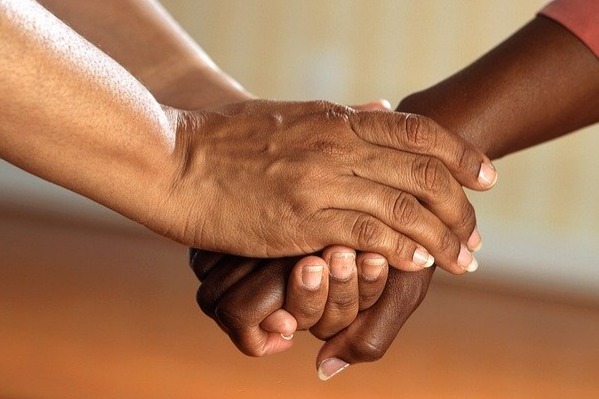
What could the European Commission’s plans to beef up regulations against money laundering & terrorism financing mean for charities?
March 4, 2020
Special Focus: What COVID-19 means for charity fundraising
April 1, 2020Kama muta, the scientific term for ‘being moved’, is one of the most powerful social emotions there is. Thomas Schubert, professor at the University of Oslo, looks at how charities can build this emotion through video to connect with supporters and inspire them to give.
Human emotions are deeply complex. They’re an important part of our daily lives, influenced by a whole range of factors and can drive us all to do many wonderful things, not least to increase our propensity to give.
At the University of Oslo, our studies of social emotions have led us to explore a range of emotions and how they are being used by organisations worldwide to encourage us to do things that we might otherwise not. Charitable campaigns, many of which deal with hugely emotive issues, can be particularly good at building the emotion we have dubbed ‘kama muta’.
Exploring kama muta
What is kama muta? Often described in English as ‘being moved’ or ‘touched’, kama muta is one of the most powerful social emotions we might experience. It’s the feeling a mother has when holding her baby for the first time, how another might feel when being proposed to or when falling in love. In other words, it’s felt when a communal relationship suddenly intensifies. We use the old Sanskrit term ‘kama muta’ to point out that the English labels are not a perfect fit.
It doesn’t just change the way we feel. One of the hallmarks of kama muta is that it creates a physical response; that might be a mild feeling of warmth or fuzziness or a more intense response, where your eyes well up with tears or you get goose bumps on your body.
An emotional response often helps us react to immediate stimuli. When people are fearful, their body reacts with a burst of adrenalin powering their fight or flight. With kama muta, what’s particularly interesting is that it creates a longing to be closer to someone or something. It’s a defining characteristic. And this urge to experience a closer connection can be a powerful driver to change behaviour, deepening relationships and inspiring people to reach out to help others.
But emotions are not just driven by real life situations. Hollywood, the advertising and marketing industries have all made billions of dollars effectively packaging up and selling kama muta. The emotion can be stirred up through the written word, audio, music and a range of other media, but it’s movies, adverts and video imagery that are particularly effective at evoking this response, drawing us into their stories and often to want to buy an advertised product.
Of course, charities too are experts in communicating emotively and conveying this sense of kama muta to motivate people to take action, whether that is to give or to respond with other acts of support. And increasingly charities are turning to video to inspire and engage supporters with widely shareable content that they can publish online and through their social channels.
As a social emotion, it’s not a singular stimulus but the story, the dynamic process and the changes people observe in those around them that stirs up the emotion. As is the case in so many Hollywood movies, charities will build up a story line that first builds a connection with the subject, then identifies a threat or obstacle, intensifying the narrative, before finding a resolution. Even short video clips can be very good at stirring up this emotion.
In this clip from SOS Children’s Villages, a little boy sits at the bus stop alone and cold, and we watch a range of people approach him, talking to him about why he’s sitting there alone without a coat, before stepping in to help. At the end, a young man gives the boy his jacket and sits there on the snow-covered streets in his t-shirt. It’s at this point where people watching the video tend to feel this emotional response, and the desire to do something to help. Addressing the viewer, the video asks if you would act if you see someone who needs help, encouraging people to donate a jacket for a child in Syria.
The Gillette advert below is another example (from the commercial sector), where the company conveys the need to change male attitudes and behaviours in response to the #MeToo movement, associating the values of being ‘the best a man can be’ with the brand itself.
Inspiring a philanthropic response
But can kama muta actually increase people’s propensity to donate? In my mind, there’s little doubt about that. Over many decades of fundraising, charities have recognised the need to move people to give and they have become real experts in bringing that emotion about in a positive and inspiring way. And they continue to use this narrative extremely effectively to drive support.
We’re only in the early stages of studying kama muta and what situations can bring on this intense response. Of course, no two people are the same; some people will be moved by one video, while others will identify more closely with the characters or subject matter of another. Still, what we do know is that, when people experience this emotion, they are more likely to feel a motivational response.
Now, with the growth of social channels, video is a far more accessible and easy-to-share tool than it was in the past, when it was more limited to charities with the biggest advertising or marketing budgets. So, the more we can grow our understanding of the emotions that drive people to feel more connected to the cause, that make them more likely to respond or react positively, and of how we can inspire that feeling in supporters, the better.
*Could you contribute to this research?
To better understand how charities are featuring kama muta in their campaigns and how it can help them fundraise, the research team is calling for more examples from the charity sector. If you have examples to contribute to this research, please submit them to the kama muta lab or share them on social media using #kamamuta.

Professor Thomas Schubert, University of Oslo
About Professor Thomas Schubert
Born and raised in Germany, Thomas studied psychology and earned his PhD from the University of Jena. He worked as a postdoctoral researcher in Amsterdam, Utrecht, and Lisbon, before joining the Department of Psychology at the University of Oslo in 2012.
The main focal areas of his research are social relations and emotions. Thomas collaborates on the kama muta project with Beate Seibt (Oslo), Alan Fiske (UCLA), and PhD students in Oslo. Read out more about Thomas and his research here.
Photo credit: Paul S. Amundsen




